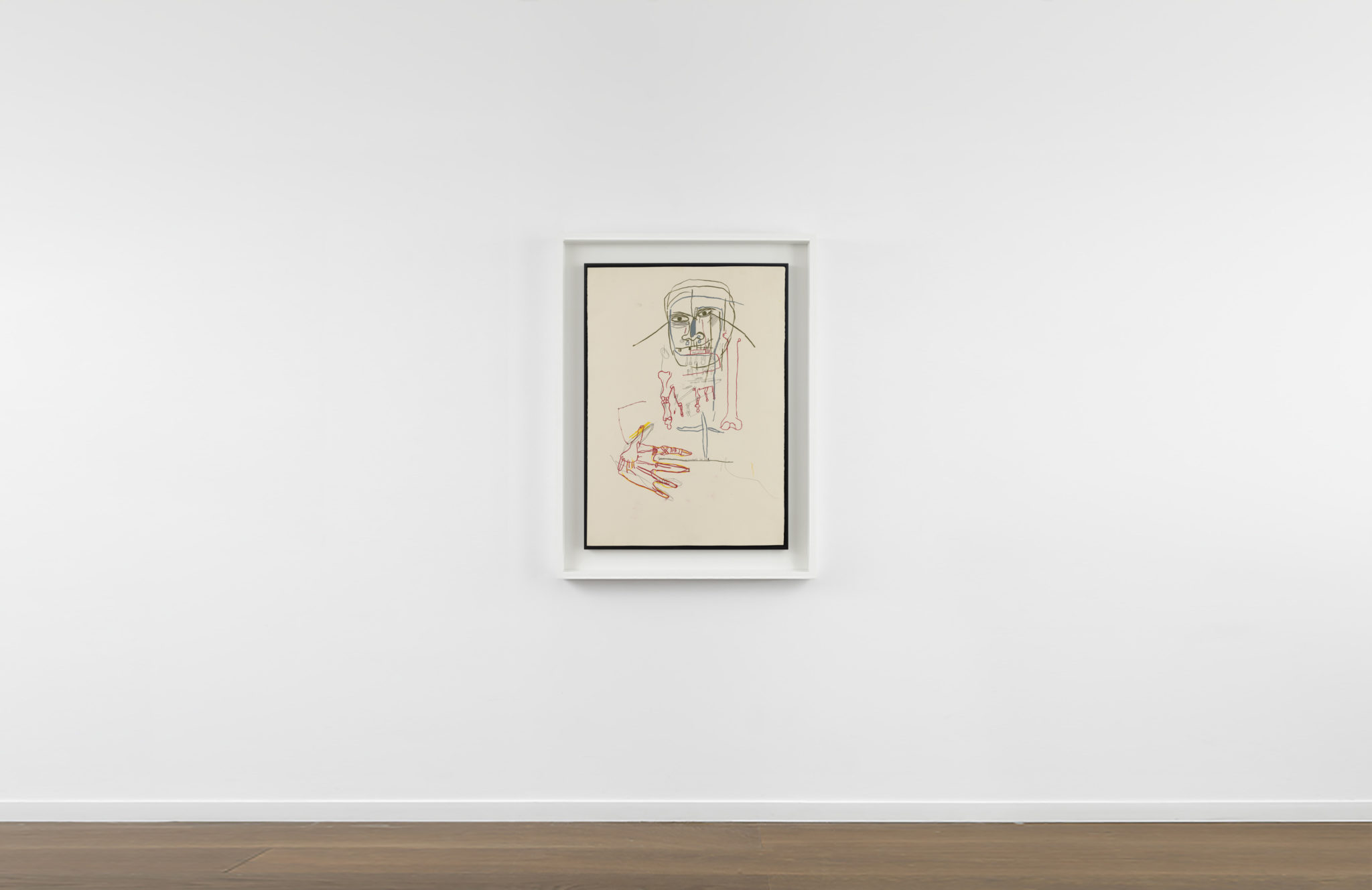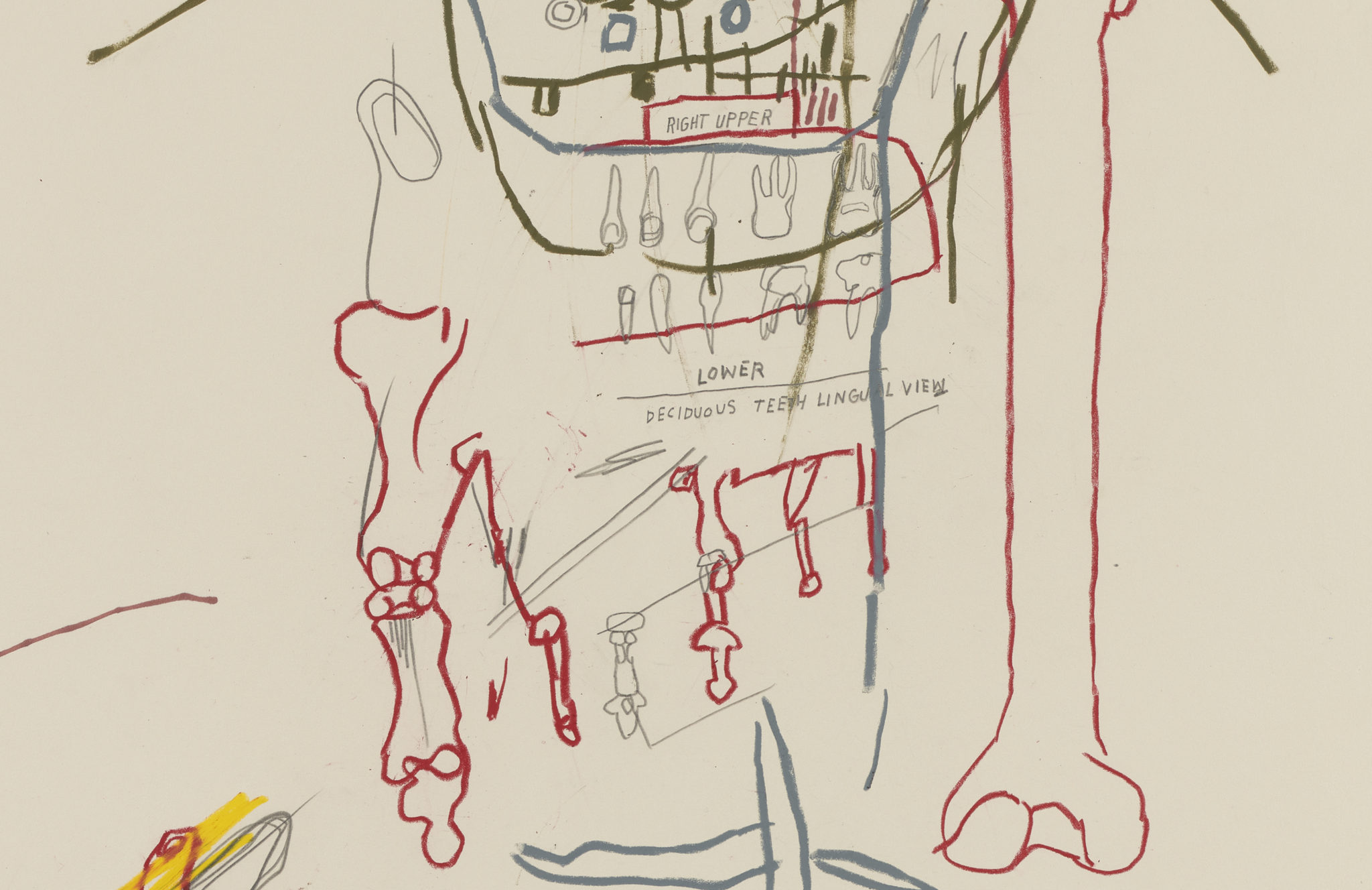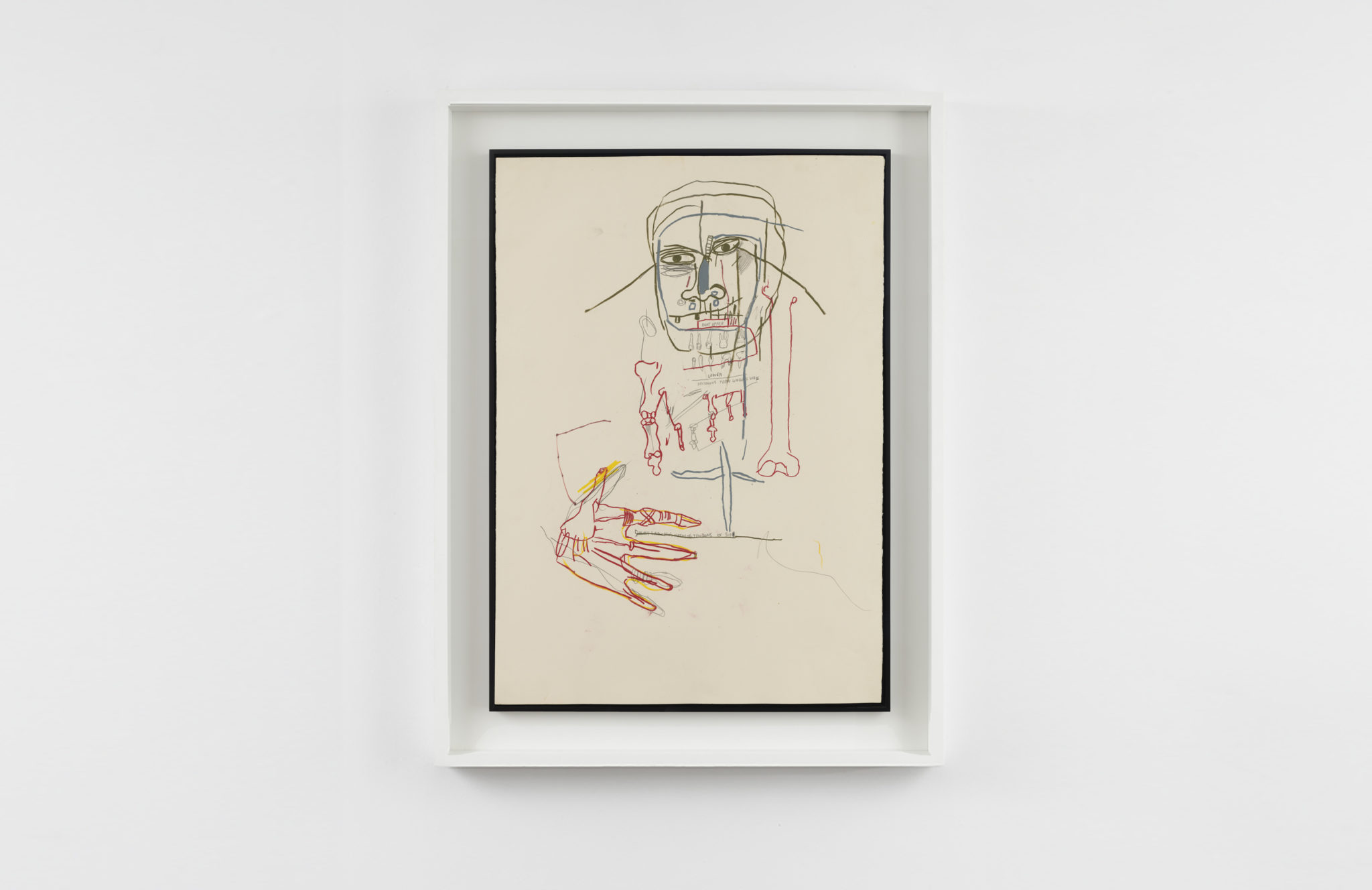Jean-Michel Basquiat讓-米歇爾·巴斯奎特
Untitled (Head), 1983
無題 (頭部), 1983年作
$1,500,000
Graphite and oil stick on paper
39 1/4 x 27 3/4 inches (99.7 x 70.5 cm)
石墨 油畫棒 紙本
99.7 x 70.5 厘米 (39 1/4 x 24 3/4 吋)
© The Estate of Jean-Michel Basquiat/ADAGP, Paris/ARS, New York
Basquiat constructs an intensity of line which reads like a polygraph report, a brain-to-hand “shake.” The figure is electronic-primitive-comic. Like monster “ghetto blaster” cassette players which link summer New Yorkers together, Basquiat’s characters portray amplification. —Diego Cortez, 1983
Throughout his career, Jean-Michel Basquiat made no hierarchical distinction between painting and drawing. He drew constantly, with confidence and spontaneity, on various supports and with manifold media. He developed his gestural and symbolically loaded style on the streets of lower Manhattan as a graffiti artist in the late 1970s, tagging the walls of dilapidated buildings with his alias, SAMO. In the years that followed, Basquiat transitioned to more traditional surfaces, yet retained the majority of his already established and complex iconography.
In the early 1980s, Basquiat established a method of crudely marking down figures, shapes, and words to create compositions through which both the personal and collective was filtered—juxtaposing the autographic nature of his symbols and figures with personages and phrases culled from popular media. Untitled (Head) (1983) exemplifies the broad scope of Basquiat’s sources and the complexity of his seemingly naïve figuration. The diagrammatic representation of the skeletal hand, with successive enlarged views of the bones of a finger, references the 1858 medical textbook Gray’s Anatomy, a copy of which he received while recovering in the hospital after an accident. In the present work these various inferences—personal experience, external reference, and artistic vocabularies—evidences Basquiat’s capacity to create works at once universal and intimate.
The year 1982 marked Basquiat’s definitive entrance to the art world: he had his first solo exhibition in the United States, at Annina Nosei Gallery in New York, and was included in Documenta 7 as the youngest artist ever to have participated in the exhibition. Of this chaotic period, the artist recalled: “I had some money. I made the best paintings ever. I was completely reclusive, worked a lot, took a lot of drugs. I was awful to people.” A number of Basquiat’s large, all-over paintings of the era correspond closely to Untitled (Head), such as Jesse (1983), exhibited at the Barbican Centre, London, in 2017. Untitled (Head) was found in a trove of drawings in Basquiat’s estate after his untimely death in 1988. Also among these works on paper was Untitled (World Famous) (1983), stating, world famous thesis. various studies of human anatomy and world history—which indicates a wider project that implicates the present work. Together they suggest a crucial moment in which Basquiat combined different goals and influential sources that would particularly distinguish the artist’s mature career.
-
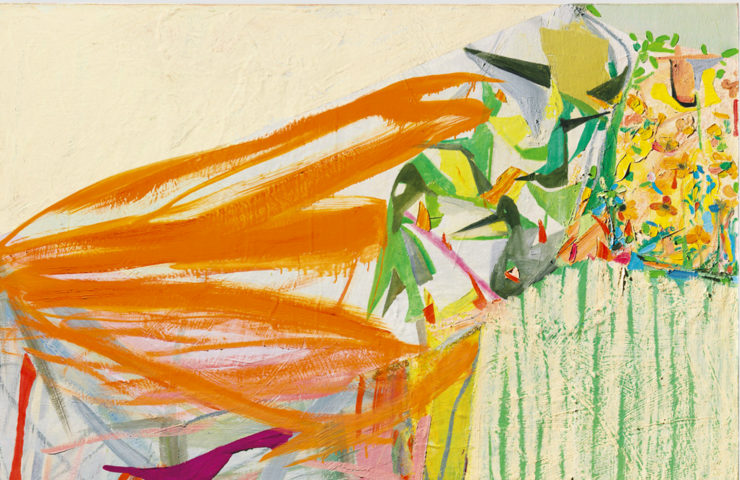
Amy Sillman艾米·希爾曼
Cliff 1, 2005
懸崖1, 2005年作
-
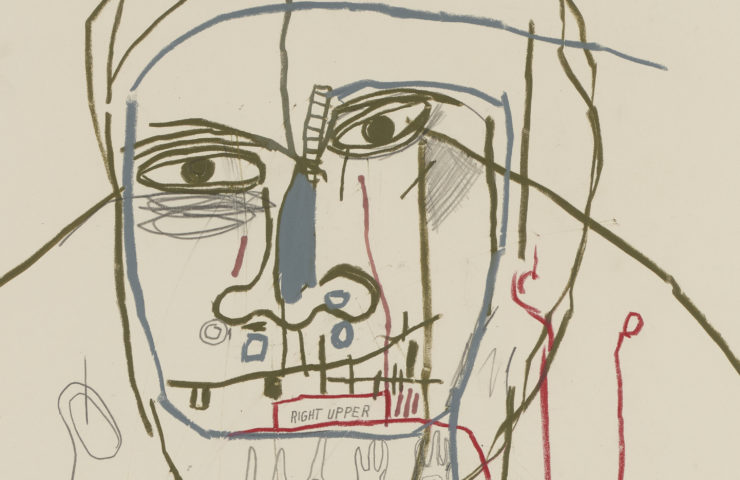
Jean-Michel Basquiat讓-米歇爾·巴斯奎特
Untitled (Head), 1983
無題 (頭部), 1983年作
-
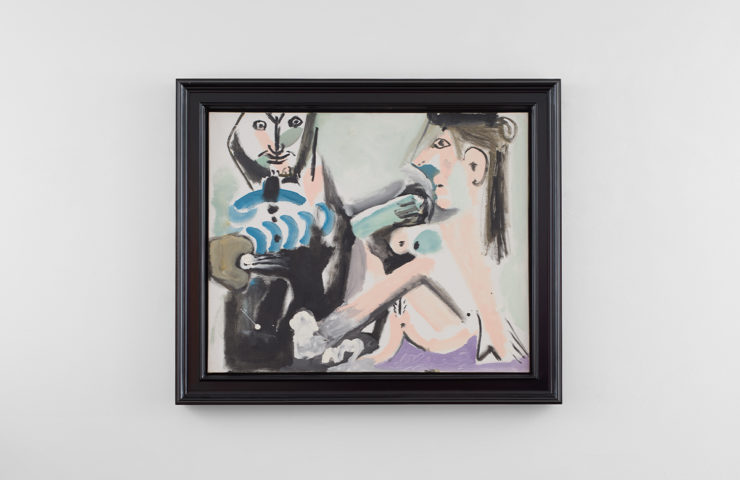
Pablo Picasso巴布羅·畢卡索
Le peintre et son modèle November 9, 1964
畫家和他的模特 1964年11月9日 -
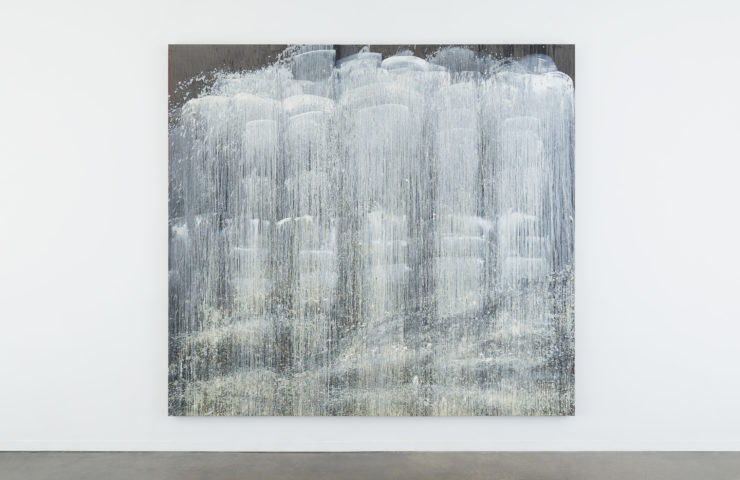
Pat Steir帕特·斯蒂爾
Tyne Panorama 1, 1990
泰恩河全景1, 1990年作 -
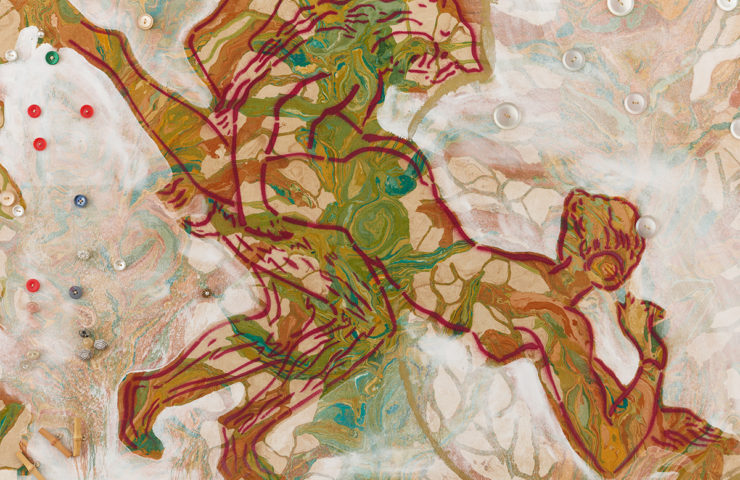
Sigmar Polke西格瑪·珀爾克
Untitled, 1980–81
無題, 1980–81年作
-
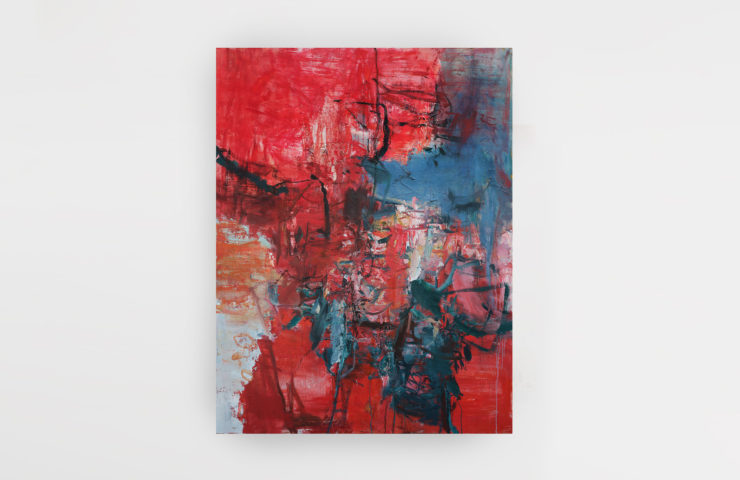
Tu Hongtao屠宏濤
Little Forest, 2017–19
小樹林, 2017–19年作

